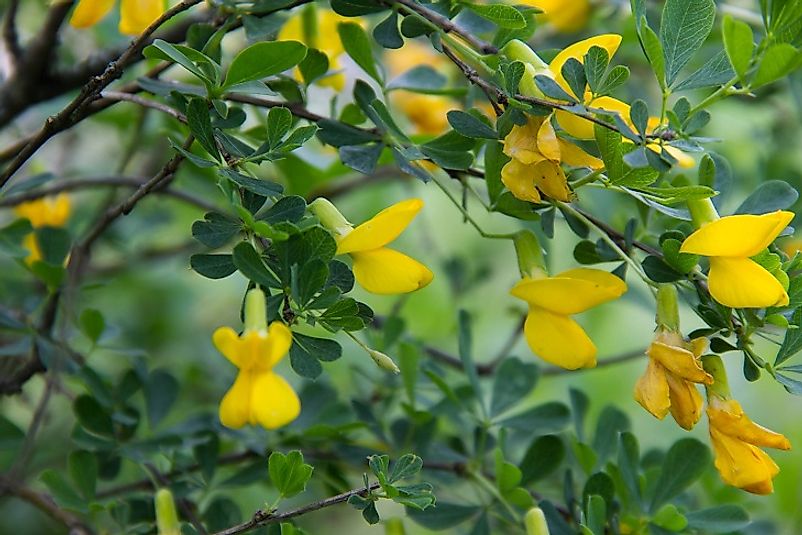Native Plants Of Mongolia

Mongolia is a country in central Asia bordering China and Russia with a broad range of plant species. The country's plants provide food and habitats for many different animals and are used for decorations, while some have medicinal value as well. Mongolia shares much of its native flora with Russia, China, and the Korean Peninsula. Some of the plant species in Mongolia are classified as threatened due to the fast spreading desert. The whole of Mongolian region is a convergence and coexistence of plants which originated from the great Siberian Taiga and central Asia Steppe and desert. Around 975 species out of the 3,000 flowering plant species found there are utilized for traditional medicine in the country. Most of these plants are wild and are adapted to the extreme weather conditions in the country. Many of these native plant species are found in the Mongolian Altai, Gobi Altai, and the Khangai regions.
Amur Maple (Acer ginnala)
The Amur Maple is native to Northeastern Asia, from Mongolia to Korea, Japan, and the Russian Far East along the Amur River Valley. The Amur maple is a small shrub tree with deciduous leaves that has many branches which are rounded in outline and sometimes grown as a garden subject or boulevard tree. The leaf is simple with doubly-serrated margins, dark green on the surface and light green underneath the surface. The maple produces yellow flowers and white fragrant flowers are borne in small panicles. The fruit of the maple is a schizocarp with their color varying from brown to red. The maple can grow to height of 20 feet. The root system is shallow and fibrous thus the plant is adapted to moist soils that are well drained. The plant is invasive and not considered threatened.
Siberian Elm (Ulmus pumila)
The Siberian elm, also known as the dwarf elm or Asiatic elm, is native to Central Asia, eastern Siberia, Mongolia, Russia, Tibet, northern China, northern Kashmir in India, and the Korean Peninsula. It is among the last tree species found in the semi-desert regions of central Asia.The Siberian elm is a fast growing hardy tree and has large ascending branches with a light-grey to grey-brown bark. The simple leaf of the elm is dark green in color with nearly serrate margins and a smooth upper surface. The flower is polygamo-monociecius with a greenish-red to brown color. The fruits of the elm are round winged samara with a seed in the center and a tan, brown color. The elm has a spreading root surface. The tree is drought tolerant and can grow in the soil of any texture and is tolerant to salinity and alkalinity in soil. However, the elm is highly susceptible to insect, diseases and herbicide damage making it undesirable.
Small-Flowered Winter Cress (Barbarea stricta)
The plant is native to Europe and Asia, but it is now found in almost all parts of the northern United States of America and Canada, and across much of Europe. The winter cress grows as a biennial herb with a height of 16 to 32 inches. The biennial or perennial herb grows in disturbed areas such as roadsides, ditches, and cultivated areas. The leaves are up to 7 centimeters long, are pinnate and lobbed. The flowers are yellow. It has cylindrical or square based fruits.
Mongolian Thistle (Tugarinovia Mongolia)
The Mongolian thistle is mainly found growing up through desert debris, as well as on stony slopes and among rocks. The herb is perennial and terrestrial with simple green leaves arranged in a basal rosette form. The leaf margins are finely serrated and a width of around 2 centimeters on average, and have lengths of between 2 and 5 centimeters. The flowers of the thistle are insect pollinated and are white in color. The fruit of the thistle is indehiscent and its seeds are dispersed by the wind. The Mongolian thistle has an allorhizous root type. The thistle is found in East Gobi, Gobi-Altai, Alashan-Gobi and in Valley of Lakes. The plant is classified as very rare.
Siberian Pea Shrub (Caragana arborescens)
The pea shrub is a small deciduous shrub growing up to 15 feet tall, and grows best in well-drained soils. The pea shrub has alternate leaves and yellow flowers. Though the plant does well in full sun exposure, it can tolerate some shade. The plant is used for breast cancer treatment and other gynecological problems.
Threats to Mongolia's Plant Life
The plants of Mongolia are faced by both natural and human-caused threats, such as spring fires after dry winters, desertification in the southern part of the country, and air pollution. Among the native plant species of Mongolia which need to be conserved are; the silver spike Siberian trout lily, hoary yellow cress, spreading bed-straw, and the Siberian apricot. Most of the zones of the country have been classified as natural reserves and protected areas as a measure towards the conservation of biodiversity.
Native Plants Of Mongolia
| Native Plants of Mongolia | Binomial Scientific Name |
|---|---|
| Amur Maple | Acer ginnala |
| Siberian Elm | Ulmus pumila |
| Small-Flowered Winter-Cress | Barbarea stricta |
| Mongolian Thistle | Tugarinovia mongolica |
| Siberian Pea Shrub | Caragana arborescens |
| Silverspike | Spodiopogon sibiricus |
| Siberian Trout Lily | Erythronium sibiricum |
| Hoary Yellowcress | Rorippa barbareifolia |
| Spreading Bedstraw | Galium humifusum |
| Siberian Apricot | Prunus sibirica |











